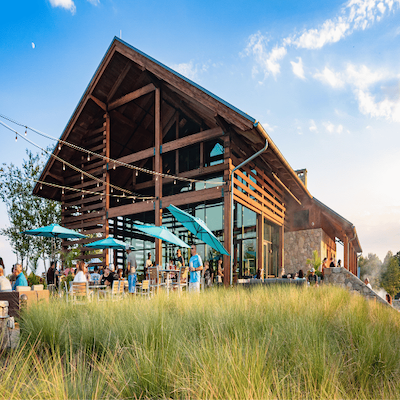Avoid These 10 Mistakes When You Go Hiking
Category: Adventurous retirement
September 21, 2022 — Swept up in the desire to stay healthy and armed with plenty of time in retirement, millions of baby boomers are enjoying hiking as a fun pastime. Unfortunately, sometimes things go wrong. According to hikersdaily.com, almost 5,000 hikers are injured every year, with most of those coming from slips and falls, with the ankle most often affected. There are an estimated 15,000 rescue operations in an average year on public lands. The most tricky of those are helicopter rescues, which typically cost around $12,000.
We would like to make sure one of these mishaps doesn’t happen to you. And to make your hike more fun, we are including some great tips from our friend Tom Cretella, one of the most experienced hikers we know. These are his tips.
Top 10 Mistakes You Don’t Want to Make Hiking
Not enough water. Running out of water is never a pleasant experience. I always carry at least 2 liters of water for a day hike. Hint, Don’t wait till you are thirty to drink; then it’s too late to fight off dehydration. Try to drink often during the hike. Good hydration keeps your muscles from cramping and your reflexes sharp. Tip: Water is heavy so I carry an extra liter of Water and stash it about 1/2 way to my destination, and retrieve on the way back. It can be a life saver.
Failure to plan for weather. Always check the forecast 24 hours before you hike. Check for temperature changes, wind, heavy rain, and thunder. Higher summits create their own weather, sometimes much colder with higher winds than expected. My advice is to hike in light clothes, but carry heavier clothes including a wind jacket wool cap and gloves in your pack. Rain gear is always in my pack.
No compass or GPS. I navigate with an APP called AllTrails. It tracks my movements, tells me where I am, and how far I have to go. It keeps me on the trail via GPS. That said, the problem is running out of power on your phone so you need to at least be familiar with how to use a compass. If you are a new hiker, check a compass direction frequently while you hike and get a feel for the direction your traveling. Don’t wait to be lost to figure how it works or how to read a map. Most trails are well marked and easy to follow, but it’s better to be safe. Even when hiking with a group I leave notice and carry SPOT just in case.
Hiking alone. When I hike alone I make sure to notify family or a friend where I am going and what route I will be taking. I also leave my itinerary in my car at the trailhead in case I do not return in a timely manner. When hiking alone I find some extra security by carrying a device called SPOT. It’s an emergency device that connects to a emergency satellite for help anywhere in the world.
Making it worse if you get lost. Sometimes in the mountains with foggy weather or rain you can get off trail or lose your way.
First, retrace your steps until you find a recognizable landmark or sign.
Second, if you are still lost, keep calm. Most lost hikers are not far from their intended route. So start by walking for 5 minutes in one direction and back if no luck. Then walk 5 minutes in another direction, eventually making a circle. If you are still lost repeat going 10 minutes in each direction and so forth. Cell service in the mountains is spotty, but if you make contact stay in one place until they find you.
Not knowing your limitations. Some people say: “What the mind can conceive the body can achieve “. Often times this gets you in trouble. Start with shorter hikes and work your way up to longer hikes. Hiking 5 or 6 hours can drain your energy quickly. Going up a mountain can be a aerobic challenge but going down is harder than you think.
Not turning back in time. There are many reasons for turning back including bad weather, injuries, or running out of daylight before you can get to your next destination. Hiking 1 mile an hour might seem impossibly slow for those who treadmill at 3 or 4 mph, but on rough terrain that’s all you can do safely.
Basic precautions against predators. In my 60+ years of hiking I have seen one moose, a number of squirrels and chipmunks, some birds and that’s about it. Bear scat every now and again. Most animals smell or hear you coming down the trail well before you get there. I do carry a loud whistle. I don’t carry bear spray but it is a consideration. If you are camping overnight, never eat or leave food in your tent. Suspend food from a tree or in a bear-proof container.
Not bringing hiking poles. Hiking poles are my best friend. They provide a handrail to pull myself up and keep me balanced on the way down. Hiking sticks are essential on the trail. They provide 2 extra points of balance, especially or rocky or slippery trails. Plus they let you use your arms to help out your legs on inclines. Trailbuddy Trekking poles are collapsible and an excellent choice. I always try to have three points of contact when I step. This definitely prevents or minimizes those slip and falls or twisted ankles that plague older hikers. Knowing how to use the poles without get tangled requires some practice. If you are a skier planting a pole is familiar. If not, practice planting your pole well in advance of your step and walk toward it alternating with each pole plant. When going down plant your pole next to where you want to put your foot and walk to it.
The wrong footwear. A sturdy shoe is essential. The rougher the terrain the more support and protection you need. Your hiking shoe should have a roomy toe box to accommodate a good hiking sock and liner. I always wear a liner under a heavier sock to prevent hot spots on my feet. I also carrier mole skin to treat any blisters or hot spots that may occur. Solomon lightweight hiking boots provided needed support on rocky trails, keep socks dry, and are lightweight.
Thanks Tom, these are great tips that could only come from an experienced hiker like yourself! Hiking is great fun and good for you, but you do need to take basic precautions to stay safe.
John’s take on equipment. On my hikes I like a smallish backpack, big enough to hold rain gear, water, lunch, extra clothing, and personal items, but not so big as to be heavy. I chose the Gregory 24 Liter Hydration pack and was very happy with it. You don’t have to carry a water bottle with the built in reservoir and drinking tube.
About Tom Cretella:
Tom Cretella, CLU, is an insurance broker with almost 50 years of experience, and also a lifetime hiker and outdoorsperspon. He has climbed all 48 of New Hampshire’s mountains over 4,000′, many of them in winter. We will be updating his 2019 article on Frequently-asked questions about Medicare and Medicare Advantage in the next few weeks.
Ask Tom at Cretella and Belowsky.
Comments? Have you taken up hiking in your retirement. Please share your tips, concerns, and experiences in the Comments section below.









Comments on "Avoid These 10 Mistakes When You Go Hiking"
LS says:
While hiking on a trail outside of Boulder last year, I took a fall while going across a boulder field. I injured my back so bad that I could barely get out of bed. When we got back home, I made an appointment with a doctor to address the pain and have a complete physical which I hadn't had in many years. Because of the fall and seeing a doctor, I discovered I had prostate cancer and recently completed 45 radiation treatments to get the cancer under control. Had I not gone hiking, I would not have known about the cancer until it was too late. Word to the wise, don't put off those routine physicals.
John Brady says:
Three of us were hiking in New Hampshire. Spent the night at an AMC hut (really nice, with good dinner and breakfast) and were on our way to another. One of the party got slower and slower as the terrain was very tough with loose rocks. About 3 hours into hike the most experienced guy and I had a talk. If we kept going we were not going to make the next hut before dark, and that looked dangerous. So when we walked back to the third, we all decided to go back the way we came to the bottom of the mountain. One of the smarter decisions I have ever been involved in. So yes, know your limitations and when to turn back!
Kim says:
We love to hike but have only stuck to trails that are well marked in State or National Parks or Forests. Sounds like Tom and John are well experienced and more adventurous hikers with good advice. Love the idea of stashing water so less to carry. I suggest for those like me who want short hikes with more level terrain to try hiking in parks in forests. When I was introduced to it I was surprised how much I enjoyed it, but I will admit my hikes are more like a walk in the woods, I stick to designated trails that are well marked but still very pretty and lots of scenery to enjoy. Maybe if I would have taken it up when I was a lot younger I would be able to keep up with Tom and John.
RichPB says:
Over the years I've spent a lot of time hiking both on wilderness trails and throughout our heavily wooded, hilly community (800 acres). This article provides excellent advice, but pay special attention to the item about bears. It may seem unlikely, but bears show up everywhere including well-built developments. They are endemic in many remote areas we may want to hike. Learn about bears, but of special note is the comment about securing your food and belongings if hiking overnight. Bears are cunning, ingenious and remarkably fearless when it comes to food and they have a very keen sense of smell. They will break into a ground cache unless your pack is in a steel, bear-proof bin. They will sit on a branch and haul your pack up by the rope used to suspend it. They will grasp a tree trunk with their rear claws and stretch out along a branch for more than 10-12 feet to slash out at even properly hung packs. I know -- I walked right out under one when a noise caused me to raise my flashlight to see a mass of growling fur with teeth and claws slashing at our packs 10 feet over my head.. A whistle, banging pans or other noise makers can help drive a bear away. Bear spray may work, but is not recommended if the bear is hanging over your head. (No, I didn't do that.)